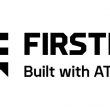NextWave increases TD-CDMA capital
NextWave Wireless announced plans to purchase a 69.23% stake in Japanese operator IPMobile to speed up the deployment of TD-CDMA technology, which is used by public safety in New York City.
TD-CDMA has long suffered from a lack of economies of scale. NextWave bought the technology’s developer, IPWireless, in April (see MRT May, page 18), but it hasn’t been clear how NextWave could jump-start the market for TD-CDMA equipment, despite the fact that the broadband wireless technology is commercially proven.
IPMobile secured spectrum in the 2 GHz band for mobile services in November 2005, along with Softbank and Emobile. Both of those companies have launched service, but IPMobile has struggled to find financing to deploy TD-CDMA, also called UMTS TDD, technology. Now IPMobile must launch service by November or risk losing its license. NextWave says it will work to meet that deadline.
According to Liz Kerton, executive director of the Global UMTS TDD Alliance, IPMobile is expected to cover Japan with up to 8000 base stations. She believes such a commitment to TD-CDMA should “kick production into high gear and bring major vendors into the ecosystem.”
Peter Jarich, analyst with Current Analysis, isn’t as confident. “Clearly, any new deal is a boon to the technology and bound to help bump scale up a bit,” Jarich said. “However, we still need to consider the magnitude and specifics of the deal. IPMobile is not a major operator. Their plans call for the deployment of ‘up to’ 8000 base stations. Will that be enough to entice big name network vendors to jump on board?”
NextWave thinks it will. According to Michael Gury, vice president of external relations with NextWave, a successful deployment by IPMobile “would bring benefits to a range of Japanese technology companies to grow as part of the TD-CDMA ecosystem.”
TD-CDMA is a standardized next-generation network technology that originally was anticipated to be rolled out in 2008, primarily to provide overflow capacity when wideband-CDMA FDD (frequency division duplex) channels reached capacity. But IPWireless accelerated the development and commercialization of the technology, creating a non-line-of-sight, high-capacity system designed as a replacement for DSL systems. The IPWireless solution uses TD-CDMA and multiple input/multiple output technology to deliver data rates of 8 Mb/s to 10 Mb/s download and 1 Mb/s to 2 Mb/s upload in a typical download-intensive environment. The technology also is likely to be an important part of the long-term evolution (LTE) standard, the next phase of the commercial 3G UMTS standard.
Last October, New York City officials awarded a five-year, $500 million contract to global defense company Northrop Grumman to build a broadband wireless public-safety network based on TD-CDMA. New York is using 10 MHz of licensed spectrum in the 2.5 GHz band obtained via lease agreements with Sprint Nextel, the nation’s largest holder of 2.5 GHz spectrum, and Trans Video Communications, owned by the Roman Catholic Diocese of Brooklyn.
The technology also has been deployed commercially in a handful of countries, including the Czech Republic, New Zealand, Germany, South Africa, Sweden and the United States. Sprint Nextel had evaluated the technology, even investing $14 million in IPWireless, but ultimately went with WiMAX because it struggled with the lack of an ecosystem surrounding TD-CDMA.
However, Northrop Grumman has its sights on TD-CDMA. “Our view is that we picked the best technology for the requirements of the jurisdiction,” said Mark Adams, chief architect for Northrop Grumman, in a recent interview. “From a performance perspective, TD-CDMA can hold its own in capacity, latency and average data rates on the street. … TD-CDMA is certainly on our list.”
GLOBAL TD-CDMA DEPLOYMENTS
AUSTRALIA > IQ Networks
Spectrum: 1900-1920 MHz
Announced Date: January 2004
Announced Deployment: Townsville, Cairns
CZECH REPUBLIC > T-Mobile
Spectrum: 1900-1920 MHz
Announced Date: June 2005
Announced Deployment: Prague by end of 2005; nationwide in 2006
FRANCE > Orange
Spectrum: 2500-2686 MHz
Announced Date: March 2005
Announced Deployment: Lille
GERMANY > Airdata
Spectrum: 2500-2686 MHz
Announced Date: October 2003
Announced Deployment: Stuttgart
GREAT BRITAIN > UK Broadband
Spectrum: 3400-3600 MHz
Announced Date: December 2004
Announced Deployment: Thames Valley
INDONESIA > netZAP
Spectrum: 2053-2083 MHz
Announced Date: December 2006
Announced Deployment: Jakarta
JAPAN > IPMobile/NTT Communications
Spectrum: 2010-2025 MHz
Announced Date: October 2003
Announced Deployment: Tokyo Trial
KHAZAKSTAN > Aksoran
Spectrum: 2500-2686 MHz
Announced Date: September 2004 Licensed in Astana, Almaty and Atyrau
LITHUANIA > Atenit and Nelte
Spectrum: 3400-3600 MHz
Announced Date: March 2005
Announced Deployment: nationwide
MALAYSIA > Atlas One
Spectrum: 2500-2686 MHz
Announced Date: January 2003
Announced Deployment: national coverage
MALAYSIA > Maxis
Spectrum: 1900-1920 MHz
Announced Date: June 2004
Announced Deployment: Subang Jaya, USJ and Puchong
MOZAMBIQUE > EmilNet
Spectrum: 2053-2082Mhz
Announced Date: December 2004
Trial Deployment: Maputo
NEW ZEALAND > Woosh Wireless
Spectrum: 2053-2082 MHz
Announced Date: January 2003
Announced Deployment: Auckland live; national coverage in 2004-05
NIGERIA > Netcom Africa
Spectrum: 2500-2686 MHz
Announced Date: November 2004
Announced Deployment: Lagos, Abuja, Port Harcourt and Kano
SOUTH AFRICA > Sentech
Spectrum: 2500-2686 MHz
Announced Date: January 2004
Announced Deployment: Johannesburg, Midrand, Pretoria, Soweto, Durban and Cape Town
TANZANIA > Cats-Net
Spectrum: 1900-1910 MHz
Announced Date: June 2004
Announced Deployment: Dar-es-Salaam
UNITED STATES > Northrop Grumman
Spectrum: 2500MHz
Announced Date: October 2006
Announced Deployment: New York City
















